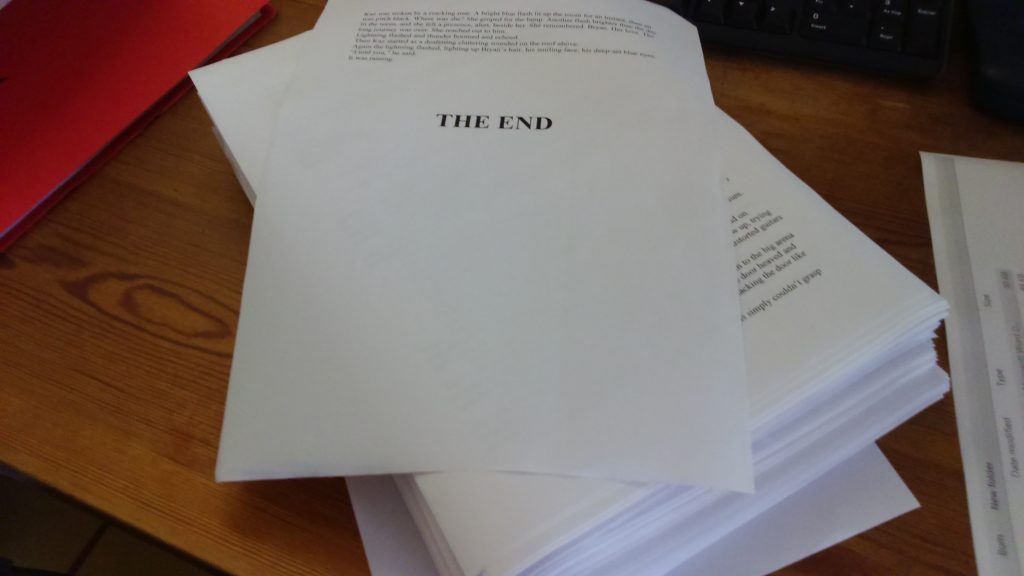
An article of mine about the Catalan language once appeared in a magazine under the title ‘Catalan Got Your Tongue? The Language With Nine Lives.’ I showed it to my Spanish friend M-J. She was bemused. “In Spanish,” she said solemnly, “a cat has seven lives. Why nine?”
“Porque sí.”
Because yes, which has always been my standard answer to questions like ‘why doesn’t English have a subjunctive?’ (Or rather, I would turn it round: “Okay, guys, so why does Spanish have a subjunctive?” and the class would chorus: “¡Porque sí!” But I quit teaching many years ago.)
 To get back to the cat and its number of lives, there’s no particular reason a cat would have nine lives as opposed to seven or eleven or a hundred and something, except that it rhymes. Well, not quite – it has assonance. If we really wanted a proper rhyme, we’d have to say five lives, which is a bit of a tongue twister, and anyway, that doesn’t sound like nearly enough lives. For a cat, I mean. Unless it’s Schrödinger’s, but we won’t go down that road right now.
To get back to the cat and its number of lives, there’s no particular reason a cat would have nine lives as opposed to seven or eleven or a hundred and something, except that it rhymes. Well, not quite – it has assonance. If we really wanted a proper rhyme, we’d have to say five lives, which is a bit of a tongue twister, and anyway, that doesn’t sound like nearly enough lives. For a cat, I mean. Unless it’s Schrödinger’s, but we won’t go down that road right now.
Whenever it can, English will make a rhyme, because rhymes are memorable, and, above all, fun. Odds and ends become odds and sods, the meal delivery service for the housebound is Meals on Wheels, and the business model that integrates both online and physical presences is bricks and clicks (or clicks and bricks). If you’re looking for trouble you’re cruising for a bruising, rooting for a booting or even clammering (sic) for a hammering. And, on a more erudite note, evolutionary developmental biology is evo-devo.
Rhythm is basic to life, and rhyme is a form of rhythm that somehow seems to lie at the core of language. The infant’s first utterances are monosyllables, repeated over and over: mama, papa, dada, baba. Small children – and the adults around them – naturally use rhymes, as in nicknames: Jojo, Dee Dee, Pepe, Lulu, and nursery words like moo moo, bow wow and so on.
Hugs not drugs. No pain no gain. Walk your talk. Wheeling and dealing. Prime time. Lean cuisine. Wear and tear. Sneak peek. Doom and gloom. Fight or flight. Wine and dine. Name and blame. Balls to the wall. Dream team. Fake it till you make it.
The rhymes come together effortlessly as if the words were always meant for each other.
So I asked M-J:
“Do you know what we call Marks and Spencer (the famous department store) in the UK?”
“Sí, sí: M & S.”
“Yes. But everyone says Marks and Sparks. In fact Marks and Spencer have registered it.”
“Esparks? Chispas in Spanish?”
“Yep.”
“What have sparks to do with the store?”
A long silence.
And then she got it.



9 Responses
Oh my, what a delight.
I had visions of noodle eating poodles and green eggs and ham.
Sam I am.
Thank you, ma’am.
PS. Why doesn’t English have a subjunctive? Very fishy.
Actually, it does, but it’s become formally identical to the indicative in almost all verbs. Now I remember that they were puzzled when I was teaching the object and infinitive structure (I want you to do) where Spanish does use the subjunctive: quiero que hagas. Why? Because yes?
Thank you for the opportunity to read. It was lovely and I enjoyed the rhymes, some familiar and others new to me. I would agree, rhyme would seem to be a form of rhythm.
Even in professional speaking, I look for rhymes…something that helps the audience remember the message better. If not a rhyme, then something using assonance. I think that is one of the reason we can remember the lyrics to old songs after 20 or so years…the rhymes and the the rhythms. Great post!
My (ex) mother-in-law is Catalan, her husband was Spanish, and they lived in France. This reminded me of some hilarious conversations we had, or at least TRIED to have.
Also, my mother often said I was cruisin’ for a bruisin’ : )
Great post and thanks for the memories!
Valerie, I’m learning much from you, and I’m appreciating the opportunity. We have grown up with these phrases, for sure. Until I was seven or so, I was certain that a bunch of cows in a field was a “hurdle of turtles”. That’s what my dad called them–for no good reason whatsoever. Interesting stuff!
Such an interesting post. I love almost everything about the origins of language though I had never thought about the expression about cats and nine lives. About rhymes and rhythms, it’s so true and probably account for the fact that so many of us remember nursery rhymes from so many years ago. Cracking up about the example of M & S.
Valerie, this was hella fun to read! Clearly we appreciate many of the same kinds of things about language! And why subjunctive indeed! Haha! I always tell my students that I learned more about English from studying other languages than I did in English classes. And all I can say is, I’m glad cats have multiple lives, whether it be seven or nine, because I have kitties and I know they need the extras!
I can’t get this thing to reply to individual comments Just to say, thank you all for your comments and so glad you enjoyed the post. Anyone know how many lives cats have in other languages? That could be a little piece of research and a new post, come to think.